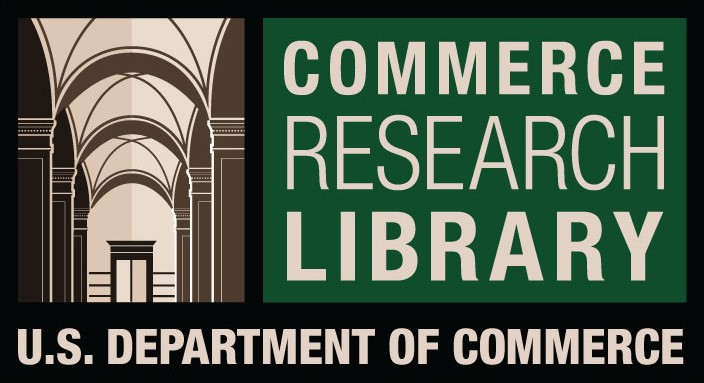AN OVERVIEW OF THE GREEN BUILDING RATING SYSTEMS IN THE MALAYSIAN CONSTRUCTION INDUSTRY
DOI:
https://doi.org/10.61841/9kvy3d58Keywords:
Best Practice, Green Buildings, Green Rating Tools,, MalaysiAbstract
It is a goal under the Malaysian government Green Technology Master Plan 2017-2030 (the GTMP) that there shall be an increase from 550 total targeted green buildings in 2020 to a total of 1,750 green buildings by 2030 with substantial targeted emission reduction in both government and private buildings. Evaluating sustainability of a project has, thus, become a necessity. In fact, the GTMP aspires to alter the current landscape of voluntary rating system by making it mandatory. The world has seen the proliferation of green building rating systems as a method to measure sustainability in buildings. In Malaysia, there are at least ten green building rating tools that had been introduced for that very purpose. However, there appears to be no consistency in terms of assessment with different rating tools focusing or giving weight on different criteria of sustainability factors or themes. This paper provides an overview of the existing green building rating systems developed in Malaysia and highlights the differences in the nature and assessment criteria, if they are to be adopted. This paper further discusses on the worldwide debate on the best practice in measuring and reporting on sustainability of a project or building and how the transition from voluntary to mandatory rating system as aspired by the GTMP may be the solution to the issue of “greenwashing”.
Downloads
References
[1] Ali Khan, R., Liew, M., & Ghazali, Z. (2014). Malaysian Construction Sector and Malaysia Vision 2020: Developed Nation Status. Procedia - Social and Behavioral Sciences, 109(doi:10.1016/j.sbspro.2013.12.498), 507 - 513.
[2] Brundtland, G. (1987). Report of the World Commision on Environement and Development: Our Common Future. Oxford Paperbacks, Report of, 400. https://doi.org/10.2307/2621529
[3] Building and Construction Authority (BCA)(SG) (2012) Buildgreen, (Inaugural Issue 1/2012). Retrieved April 30, 2020 from https://www.bca.gov.sg/Publications/BuildGreen/others/BGreen_1_2012.pdf
[4] CIDB. (2018). 2018-Built-It-Green.Pdf. Retrieved from http://www.cidb.gov.my/images/content/pdf/laporan-teknikal-pembinaan/2018-built-it- green.pdf
[5] CIDB. (2015). Construction Industry Transformation Programme (CITP) 2016-2020. Construction Industry Development Board Malaysia (CIDB) (p. 184). https://doi.org/10.1007/s13398-014-0173-7.2
[6] CREAM. (2017). Index and Analyze Green Building Rating Tools Developed In Malaysia. (May)
[7] Economic Planning Unit. (2015). Eleventh Malaysia Plan: Anchoring Growth on People. Rancangan Malaysia Kesebelas (Eleventh Malaysia Plan): 2016-2020 (pp. 1–372). https://doi.org/10.1017/CBO9781107415324.004
[8] GSB. (2011). Green Building Index: GBI Assessment Criteria for Township Version 1.01 (pp. 0–57).
[9] Hamid, Z. A., Zura, M., Zain, M., Hung, F. C., Syarizal, M., & Noor, M. (2014). Towards a National Green Building Rating. Malaysian Construction Research Journal, 14(1), 1–16
[10] Hung, F. C., & Fuad, F. binti A. (2018). An Overview of Green Building Rating Tools in Malaysia. Building & Investment, (June), 35–37.
[11] Igor, M., & Hosseini, M. (February 2018). Greenwashing the Property Market: Why 'Green Star' Ratings Don't Guarantee More Sustainable Buildings. The Conversation. Retrieved July 15, 2019, from https://theconversation.com/greenwashing-the-property- market-why-green-star-ratings-dont-guarantee-more-sustainable-buildings-91655
[12] Ministry of Energy Green Technology and Water. (2017). Green Technology Master Plan Malaysia 2017 - 2030. Ministry of Energy, Green Technology and Water (KeTTHA). https://doi.org/ISBN NO. 978-967-5893-09-4
[13] Ministry of Natural Resources and Environment Malaysia. (2015). Malaysia Biennial Update Report to the United Nations Framework Convention on Climate Change (UNFCCC). Ministry of Natural resources and Enviroment Malaysia (pp. 1–174). Retrieved from https://unfccc.int/files/national_reports/non- annex_i_parties/biennial_update_reports/application/pdf/malbur1.pdf.
[14] Pandey, S. (2015). Impact of Green Building Rating Systems on the Sustainability and Efficacy of Green Buildings Case Analysis of Green Building Index, Malaysia. MIT- UTM Malaysia Sustainable Cities Program, 1–10.
[15] Reed, R. B., Anita Wilkinson, Sara Schulte, Karl-Werner. (2009). International Comparison of Sustainable Rating Tools. The Journal of Sustainable Real Estate, 1(1), 1- 22.
[16] RSMeans. (2011). Green Building Project Planning & Cost Estimating (Vol. Third Edition). New Jersey: John Wiley & Sons, Inc.
[17] Zuhairi Abd Hamid, Kamarul Anuar Mohamad Kamar, Mohd Khairolden Ghani, Maria Zura Mohd. Zain, and Ahmad Hazim Abdul Rahim (2011), Green Building Technology: The Construction Industry Perspective and Current Innnitiative, keynote address of Management in Construction Researchers’ Association (MICRA) 10th Annual Conference and Meeting, IIUM, Kuala Lumpur, July 2011.
Downloads
Published
Issue
Section
License

This work is licensed under a Creative Commons Attribution 4.0 International License.
You are free to:
- Share — copy and redistribute the material in any medium or format for any purpose, even commercially.
- Adapt — remix, transform, and build upon the material for any purpose, even commercially.
- The licensor cannot revoke these freedoms as long as you follow the license terms.
Under the following terms:
- Attribution — You must give appropriate credit , provide a link to the license, and indicate if changes were made . You may do so in any reasonable manner, but not in any way that suggests the licensor endorses you or your use.
- No additional restrictions — You may not apply legal terms or technological measures that legally restrict others from doing anything the license permits.
Notices:
You do not have to comply with the license for elements of the material in the public domain or where your use is permitted by an applicable exception or limitation .
No warranties are given. The license may not give you all of the permissions necessary for your intended use. For example, other rights such as publicity, privacy, or moral rights may limit how you use the material.









